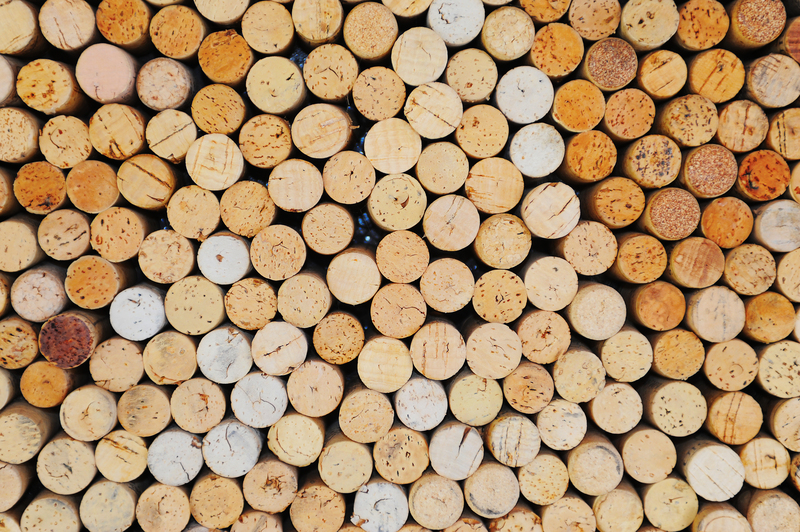Discover How to Give Old Items New Life with Inspiring Upcycling Projects
Ever wondered what to do with that pile of old furniture, outgrown clothes, or worn-out household items cluttering your home? Upcycling provides creative, cost-effective solutions to breathe fresh life into your used items, simultaneously benefiting the environment and igniting your creativity!
What Is Upcycling and Why Is it Important?
Upcycling, sometimes called creative reuse or repurposing, is the process of transforming unwanted or discarded objects and materials into new products of greater value or use. Unlike recycling, which often breaks items down to their raw materials, upcycling preserves the core structure while enhancing aesthetics or functionality.
Giving old items new life through upcycling projects is not only fun, but also has a significant environmental impact. By upcycling, you:
- Reduce waste sent to landfills
- Lower your carbon footprint by avoiding new purchases
- Encourage creativity by envisioning alternative uses for everyday items
- Save money by crafting one-of-a-kind pieces for your home
Let's embark on a journey of discovering how to give old items new life through innovative upcycling ideas and practical tips for every skill level.

Main Benefits of Upcycling Old Items
Environmental Sustainability
Upcycling conserves resources by reducing the need for raw materials, cutting back on pollution, and promoting sustainable living. Every time you choose to upcycle an object, you divert waste and decrease greenhouse gas emissions caused by manufacturing new goods.
Economic Savings
Renovating and revamping old belongings can save you hundreds, even thousands, of dollars annually. Instead of purchasing new furniture or decor, imagine repainting a vintage dresser or turning a battered ladder into a stylish shelf. Your wallet will thank you!
Enhanced Personal Style & Creativity
Customizing your old items through inspiring upcycling projects helps infuse your personality and vision into every corner of your home. Plus, handmade pieces often spark conversations and admiration from guests.
Skill Development and Family Bonding
Upcycling gives you an opportunity to learn new skills--woodworking, painting, sewing, or even basic electronics. It's a fantastic way to bond with family, especially children, while imparting values of environmental responsibility.
Top Inspiring Upcycling Project Ideas
Ready to give your old items a new life? Here are some creative upcycling projects to get you started:
1. Transforming Old Furniture
- Turn a dresser into a kitchen island: With some sanding, a fresh coat of paint, and updated hardware, an outdated dresser can become a stunning and mobile kitchen prep station.
- Repurpose wooden pallets into garden planters: Pallets destined for landfill can be converted into charming vertical gardens or rustic coffee tables.
- Make a bench from a crib: Once your child outgrows their crib, convert it into a sturdy and stylish bench by removing one side rail and adding a padded seat.
2. Breathing New Life into Old Textiles
- Patchwork quilts from old clothing: Gather worn-out T-shirts, jeans, and dresses, and sew them together for a colorful, memory-filled blanket.
- Turn sweaters into cozy pillow covers or mittens: Unravel what no longer fits, and knit or sew something useful and beautiful.
3. Upcycling Household Decor and Accessories
- Mason jars as chic organizers or vases: Paint, wrap with rope, or glue on trinkets for a personalized touch.
- Ladders as bookshelves: Secure an old wooden ladder horizontally or vertically on a wall to display books or houseplants.
- Teacups as candle holders: Melt wax into vintage teacups for charming centerpieces.
4. Upcycling Old Electronics
- Suitcase record player: Turn an abandoned hard-shell suitcase into a stylish retro record player case (or speaker system) with basic electronics and some creative flair.
- Monitor as a cat bed: Remove the inner electronics from a broken CRT monitor or TV and line the space with a soft pillow for a quirky pet hideaway.
5. Outdoor Upcycling Projects
- Tire swings and planters: Paint worn tires in vibrant colors and hang them or fill with soil for unique playground fun or garden accents.
- Rain gutters as vertical gardens: Mount old gutters against a fence or wall, drill drainage holes, and fill with soil and plants for space-saving green walls.
Step-by-Step Guide: How to Upcycle Old Items at Home
Want to start your own inspiring upcycling project? Here's a comprehensive guide to help you succeed:
1. Identify Potential Items for Upcycling
Check closets, attic, garage, and shed for unused or damaged clothes, furniture, containers, or electronics. Ask friends and family for their cast-offs or visit local thrift shops for inexpensive materials.
2. Seek Inspiration and Ideas
Browse websites, social media platforms, and books dedicated to upcycling and creative reuse. Create a mood board to organize your ideas and narrow down your project list.
3. Clean and Prep Your Materials
Thoroughly clean all items. Sand wooden furniture, wash textiles, and remove rust or grime from metals. This step is crucial for both safety and ensuring paint or adhesives stick properly.
4. Gather Tools and Supplies
- Sandpaper or a sander
- Paint, stains, or sealants
- Screws, nails, or glue (as required)
- Fabric, thread, or stuffing for textile projects
- Brushes and safety equipment (goggles, gloves, masks)
5. Plan Your Design
Measure and sketch your project in detail. Decide if you want to keep the original look and add subtle upgrades, or completely transform the item for a new function.
6. Execute Your Project Safely
Follow instructions carefully, ask for help with heavy lifting, and always use tools correctly. Start with small, simple projects if you're a beginner, and gradually advance to more complex upcycling crafts.
7. Add a Personal Touch
Embellish your finished masterpiece with stencils, decals, unique hardware, or a splash of bold color. Make it yours!
Upcycling Tips for Beginners
- Start small: Try projects like mason jar organizers, tin can planters, or T-shirt tote bags before upcycling large furniture pieces.
- Research techniques: Watch online tutorials for guidance on painting, sewing, or minor carpentry used in inspiring upcycling projects.
- Safety first: Wear gloves and goggles while using tools or chemicals. Work in a well-ventilated space.
- Use what you have: Maximize the materials at hand instead of buying new supplies.
- Have patience: Upcycling can be a learning experience. Embrace mistakes as part of the process!
Where to Find Old Items for Upcycling
If you don't have enough materials at home, explore:
- Thrift stores and flea markets
- Garage or estate sales
- Community swap events
- Online marketplaces (Facebook Marketplace, Craigslist)
- Curbside items set out for trash collection
Always inspect found items for safety and cleanliness before bringing them home for upcycling.
Upcycling Success Stories: Real-Life Inspiration
From Drab Dresser to Designer Statement Piece
Melanie, a mother of three, found a battered dresser at a curbside clean-up. With turquoise paint, gold handles, and a coat of sealant, she turned it into a show-stopping focal point for her bedroom. "Reimagining what an object can be adds thrill to home decorating," she says.
Old Books Reinvented as Secret Storage
Love books but running out of shelf space? Martha glued vintage books together and hollowed out the pages to create hidden stash boxes for remotes and trinkets--clever, attractive, and zero waste!
Transforming a Bike Wheel into a Wall Clock
With some clever handiwork, craft blogger Julian attached clock hands and numbers to a salvaged bike wheel. Now, the clock hangs proudly above their fireplace, an eye-catching blend of art and function.

How to Recycle vs. Upcycle: What's the Difference?
Recycling usually involves breaking down materials to create new raw materials for manufacturing fresh products--think shredded paper or melted glass. This process can require substantial energy and sometimes results in lower quality.
Upcycling, in contrast, retains much of the original structure and adds value or appeal through creativity. For example, an old wooden door repurposed as a headboard saves energy, adds character, and keeps memories alive.
Both recycling and upcycling help the environment, but upcycling gives you more creative freedom and the chance to give old items beautiful, new lives.
Conclusion: Your Upcycling Adventure Awaits!
Upcycling is a powerful way to make old items new again--it stretches your imagination, saves money, and actively helps protect our planet. Whether you're a beginner repurposing jars and T-shirts or an experienced DIYer ready to take on bigger furniture projects, the possibilities are endless.
Ready to embark on your own journey? Start small, let your creativity soar, and remember: every item has the potential for a fresh start. Share your projects online to inspire others and keep the upcycling movement growing.
Final Thoughts on Inspiring Upcycling Projects
- Don't hesitate to experiment with new ideas and materials
- Include friends and family for creative, memorable experiences
- Every project helps create a greener, more stylish world
So, look around you--what everyday object can you give a new life today?
